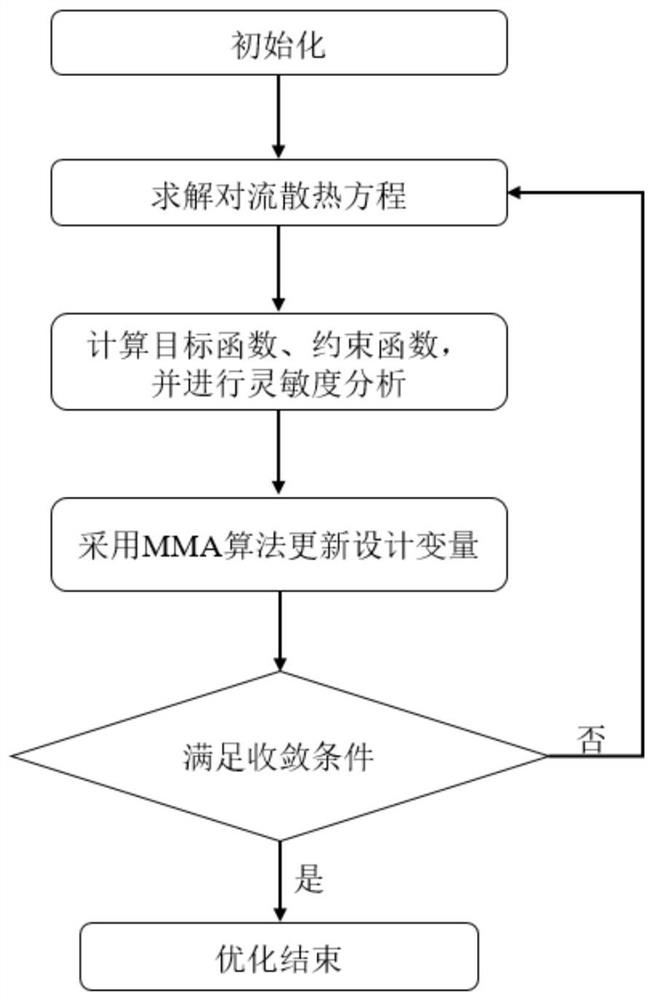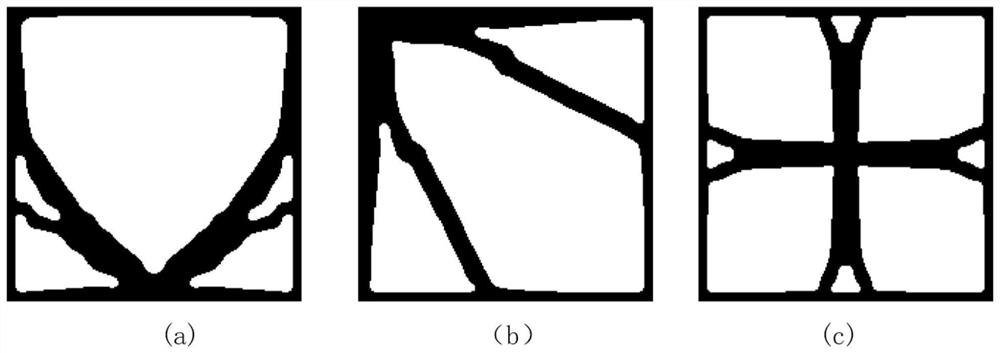A Topology Optimization Method for Convective Heat Dissipation Structures That Can Avoid Boundary Material Attachment
A technology of heat dissipation structure and topology optimization, applied in design optimization/simulation, constraint-based CAD, calculation, etc., can solve problems such as wrong application of convection load, inaccurate application of thermal convection load, boundary material adhesion effect, etc., to avoid errors Apply, Avoid Boundary Material Attachment Effects, Avoid Boundary Material Attachment Effects
- Summary
- Abstract
- Description
- Claims
- Application Information
AI Technical Summary
Problems solved by technology
Method used
Image
Examples
Embodiment Construction
[0062] The following describes several preferred embodiments of the present invention with reference to the accompanying drawings, so as to make its technical content clearer and easier to understand. The present invention can be embodied in many different forms of embodiments, and the protection scope of the present invention is not limited to the embodiments mentioned herein.
[0063] In the drawings, the size and thickness of each component shown in the drawings are arbitrarily shown, and the present invention does not limit the size and thickness of each component. In order to make the illustration clearer, the thicknesses of components are appropriately exaggerated in some places in the drawings.
[0064] like figure 1 As shown, it is a flow chart of a design method of a topology optimization method for a convection heat dissipation structure that can avoid the attachment of boundary materials provided by the present invention.
[0065] like figure 2 As shown, the pre...
PUM
 Login to View More
Login to View More Abstract
Description
Claims
Application Information
 Login to View More
Login to View More - R&D
- Intellectual Property
- Life Sciences
- Materials
- Tech Scout
- Unparalleled Data Quality
- Higher Quality Content
- 60% Fewer Hallucinations
Browse by: Latest US Patents, China's latest patents, Technical Efficacy Thesaurus, Application Domain, Technology Topic, Popular Technical Reports.
© 2025 PatSnap. All rights reserved.Legal|Privacy policy|Modern Slavery Act Transparency Statement|Sitemap|About US| Contact US: help@patsnap.com



